Caterpillar’s never-ending journey
22 February 2021
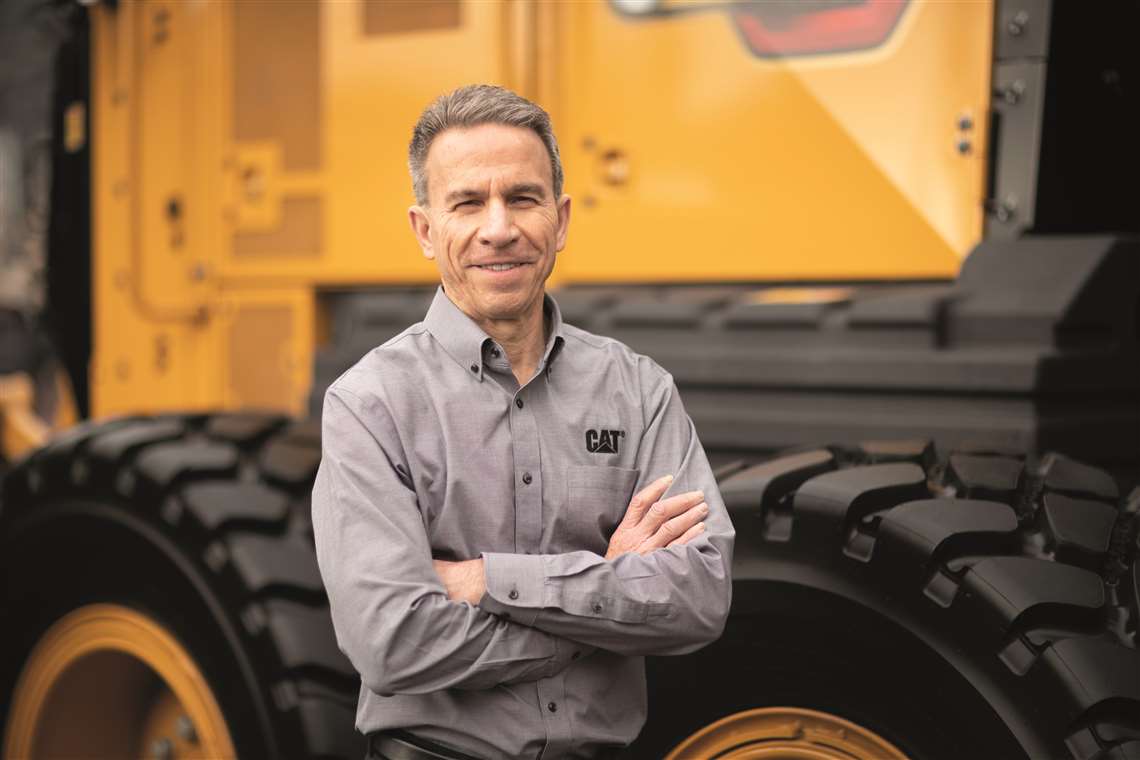 “Caterpillar facilities operate as essential businesses all around the world. If we can’t keep the lights on, if we don’t have fuel or engine parts for trucks to deliver medicines and groceries, if we don’t have machines to help provide clean water, the world has a big problem.” - Jim Umpleby, Caterpillar CEO
“Caterpillar facilities operate as essential businesses all around the world. If we can’t keep the lights on, if we don’t have fuel or engine parts for trucks to deliver medicines and groceries, if we don’t have machines to help provide clean water, the world has a big problem.” - Jim Umpleby, Caterpillar CEO
An interview with Caterpillar CEO Jim Umpleby
By Mike Osenga
James (Jim) Umpleby III has been chairman of the board of directors and chief executive officer of Caterpillar Inc. since December 2018. He was named CEO in January 2017 and was elected chairman of Caterpillar’s board 23 months later.
Umpleby graduated from the Rose-Hulman Institute of Technology with a Bachelor of Science degree in mechanical engineering and joined what is now Caterpillar’s Solar Turbines subsidiary in San Diego in 1980.
With 2019 revenues of nearly $54 billion, he has led Caterpillar through a number of significant challenges during his tenure, with the global pandemic obviously being at the top of the list. Also on his watch, Caterpillar launched a new corporate strategy in 2017 centered around operational excellence, expanded offerings and services, and profitable growth. Further, Caterpillar relocated its corporate headquarters from Peoria, Ill., to Deerfield, Ill., and continued the company’s transition from the world’s largest engine and machinery manufacturer to one that also has an increased emphasis on services and analytics as well as connectivity and autonomy.
As the unlikely and unprecedented year of 2020 drew to a close, Umpleby sat down with Diesel Progress (remotely of course) and in a wide-ranging interview, discussed Caterpillar in the time of COVID, its ongoing investments in digital technologies, as well as corporate culture, customers, mechanical developments, and where the company goes from here.
CATERPILLAR & COVID
Umpleby: I couldn’t be more proud of our team. Most of our office employees have been working remotely. That’s what I’m doing this morning. We made some investments in technology over the last few years and it really has served us well.
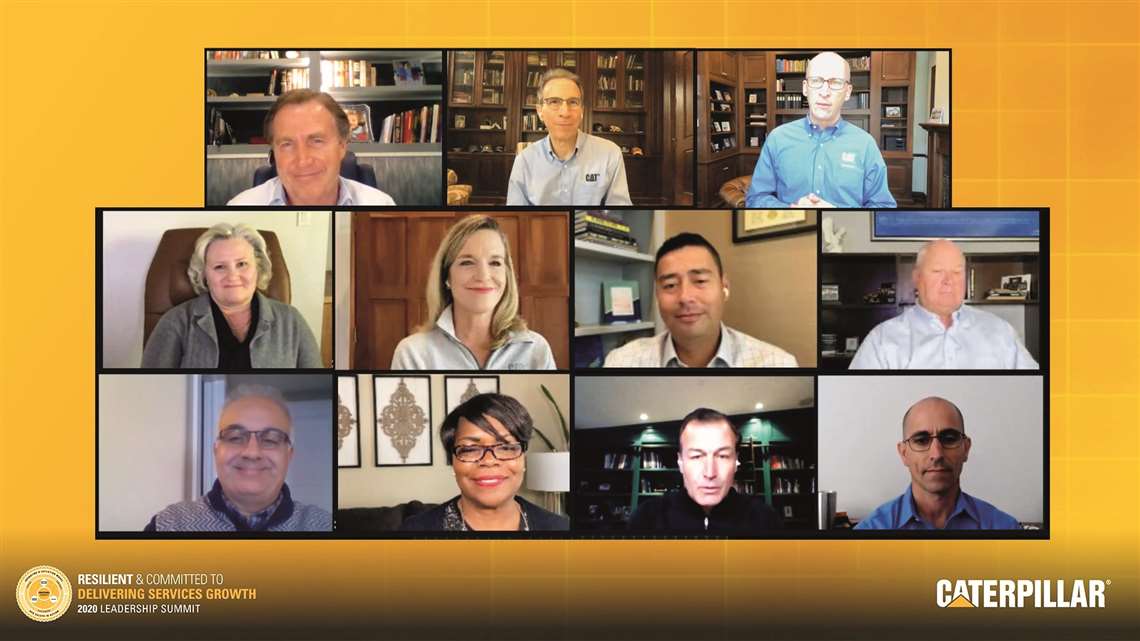 “I spend most of my days doing what I’m doing with you right now, looking at a screen and having these kinds of conversations.” - Jim Umpleby, Caterpillar CEO
“I spend most of my days doing what I’m doing with you right now, looking at a screen and having these kinds of conversations.” - Jim Umpleby, Caterpillar CEO
If you would’ve asked me three years ago if we could have pulled this off (working remotely), I probably would have said no, but we really haven’t missed a beat. We use Microsoft Teams (a virtual meeting collaboration tool), and we use it a lot.
Caterpillar facilities operate as essential businesses all around the world. It’s almost obvious, right? If we can’t keep the lights on, if we don’t have fuel or engine parts for trucks to deliver medicines and groceries, if we don’t have machines to maintain sewer systems or provide clean water, the world has a big problem. We’ve been just so proud of our team, and the way they’ve been resilient and worked their way through these challenges.
We’ve gotten much better at it all. When the pandemic first broke, our senior leadership team was meeting every day because we were dealing with so many issues as governments were trying to decide how to deal with this.
Obviously, it hasn’t been easy. Employees in our production and distribution facilities and our other support employees have continued to come to work through this pandemic. We’re following applicable government directives and taken best practices from the government authorities, plus some others. For example - masks, frequent cleaning and disinfecting and staggered shifts and breaks. We’ve moved people apart to give some social distancing as well.
We went into the pandemic with a strong balance sheet. We secured additional sources of liquidity. And importantly, we’ve been able to continue to invest in our strategy during this year. Our competitive and flexible cost structure has served us well during this time.
DIGITAL DEVELOPMENTS
Umpleby: We’ve invested heavily in our digital capabilities and have continued to do so. We set a target for ourselves to have a million connected assets and achieved that in 2019.
When we embarked on our strategy in 2017, services were one of the three main elements of that strategy. For us, services are everything that we do to make a customer successful after we sell that first piece of equipment. A lot of things go into that.
We’re continually investing in new ways to leverage connectivity, to make our customers more successful. Whether it’s avoiding unplanned outages, maximizing availability, maximizing utilization, minimizing downtime, and all the rest.
It’s a never-ending journey, and we’ll continue as technology advances to find new ways to make our customers more successful. It is a key part of what we’re doing.
Every customer has a different approach Our job is to be flexible and to deal with each individual customer in a way that makes sense for them. Avoiding unplanned downtime is something that drives a lot of value for our customers.
Equipment health is something that we invest heavily in to provide to our customers. And it’s getting better all the time. Some customers want us to do everything onsite to take care of their equipment. And some are, “no, send me a text or call me, or some other way to transfer data to me.” Again, we’re flexible based on customer needs.
AUTONOMOUS VEHICLES
Caterpillar has a long history with autonomous vehicles, yet Umpleby says it is still early in the game with the best still ahead.
Umpleby: If you think about what we’ve done with our autonomous mining trucks – we’re excited. I really believe this is an area where the industry has reached a tipping point.
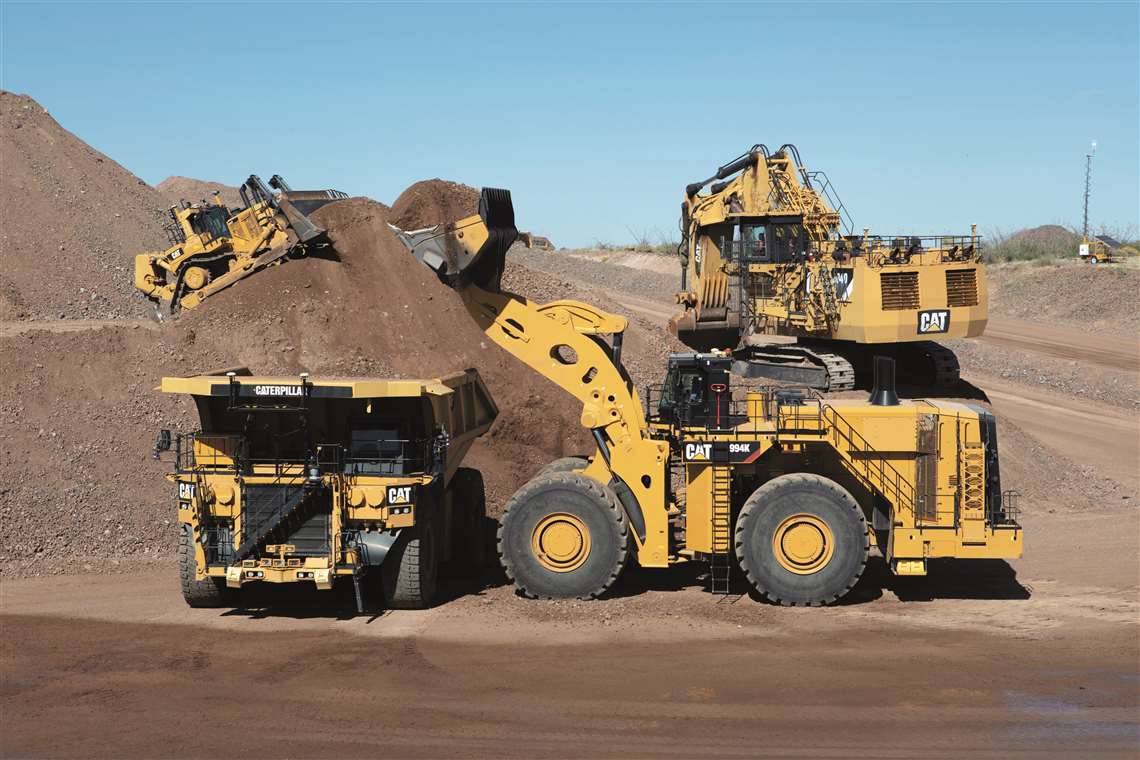 “We have about 340 autonomous mining trucks running. We expect to reach 400 by the end of the year. We like to say that we have more actual autonomous miles on our mining trucks than any car manufacturer has out there. And we don’t think there’s any looking back.” - Jim Umpleby, Caterpillar CEO
“We have about 340 autonomous mining trucks running. We expect to reach 400 by the end of the year. We like to say that we have more actual autonomous miles on our mining trucks than any car manufacturer has out there. And we don’t think there’s any looking back.” - Jim Umpleby, Caterpillar CEO
For many mines of a certain size, most of those customers now want an autonomous fleet. We’ve had customers publicly state that they’re seeing productivity increases in the range of 30%, which is obviously very significant to their bottom line. We have about 340 autonomous mining trucks running. We expect to reach 400 by the end of the year. We like to say that we have more actual autonomous miles on our mining trucks than any car manufacturer has out there.
And we don’t think there’s any looking back. There are opportunities in the construction space as well for selling autonomy, for remote control, and we’re starting to do that as well.
The value proposition for a large mining truck is not the same value proposition for a smaller machine. A lot of the technologies – autonomous, semi-autonomous, remote control – those kinds of things will find their way into other products including newer construction products. But in some cases, maybe they won’t.
It will be different by customer. It will be different by machine. We’re flexible there, but some of the same principles apply. It’s about increasing safety at the job site. It’s about making the customers more efficient. It’s about reducing owning and operating costs.
We will continue to invest in technologies like that to make our customers more successful by making them more productive.
I’m very fortunate that my predecessors had the vision to invest in this technology. But what’s really been remarkable is just over the last two or three years it has really taken off and become very well accepted by our customers, because of the productivity increases they can see. It really has been a game changer.
MECHANICAL VS. DIGITAL
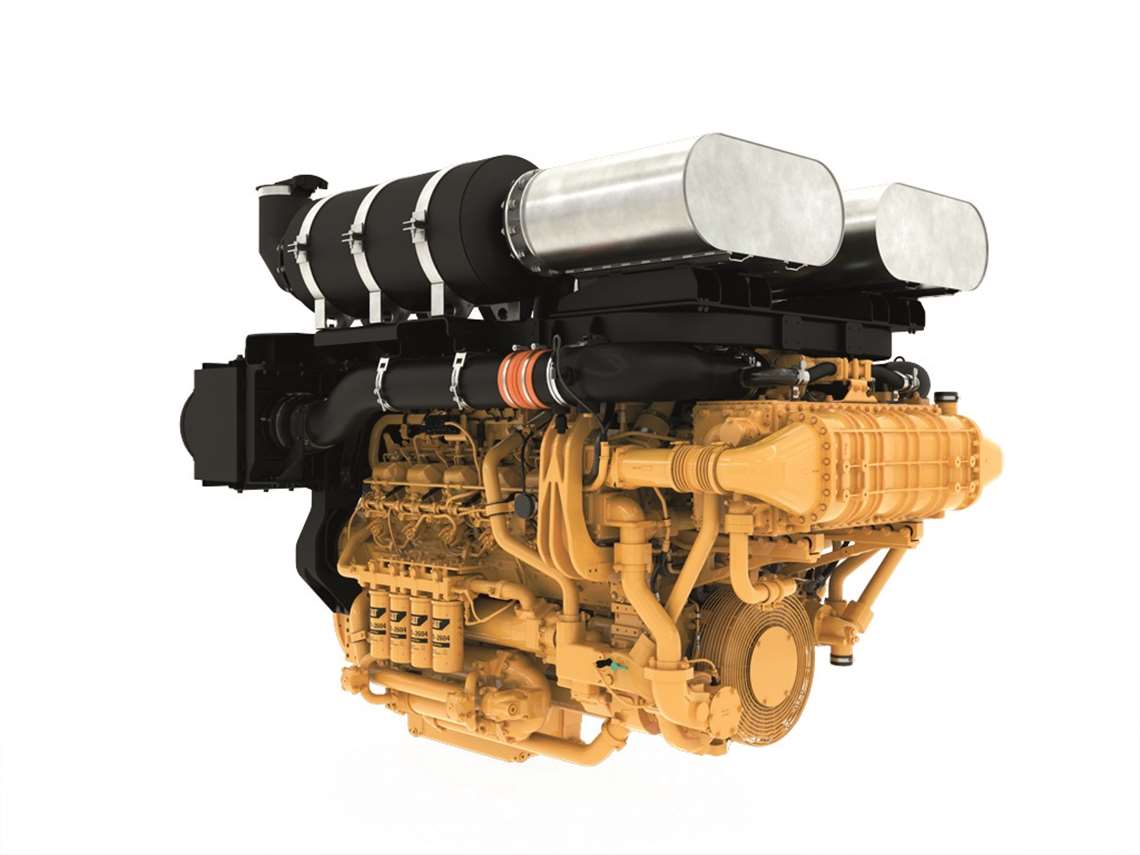 “We still invest significantly in both machines and engines, both for new products and to fine-tune our existing products. There’s a lot of things we can do from improving power density to burning alternative fuels.” - Jim Umpleby, Caterpillar CEO
“We still invest significantly in both machines and engines, both for new products and to fine-tune our existing products. There’s a lot of things we can do from improving power density to burning alternative fuels.” - Jim Umpleby, Caterpillar CEO
With all the intense focus (and money) spent on developing digital systems, do the more standard mechanical and hydraulic systems start to take a back seat?
Umpleby: Not at all. We still invest significantly in both machines and engines, both for new products and to fine-tune our existing products. There’s a lot of things we can do from improving power density to burning alternative fuels.
And it’s not just engines and machines, but also our transmission and control systems, and the way we integrate those together to provide a competitive advantage and value for our customers. It’s an evolution.
For example, you look at our engines with the dynamic gas blending systems used in oil and gas. It allows customers to substitute up to about 85% diesel with natural gas, which gives them both an operating cost advantage and a flexibility advantage given the fact that they need to truck in less diesel fuel.
We continue to do those kinds of things. We’re always looking at new kinds of fuels that we can burn like biogases. In some of our gas turbines, we can burn hydrogen to produce electricity. A lot of the advantage comes from our ability to integrate the various things that we manufacture.
ELECTRIFICATION
In the eyes of some, Caterpillar has said comparatively little about electrification. How does that look from the CEO’s chair?
Umpleby: We’re always investing in new technologies. Our job is to be ready to meet the future needs of our customers. We’ve been, as you know, engaged in electrification, and have had hybrid models for decades. So, they’re not new to us.
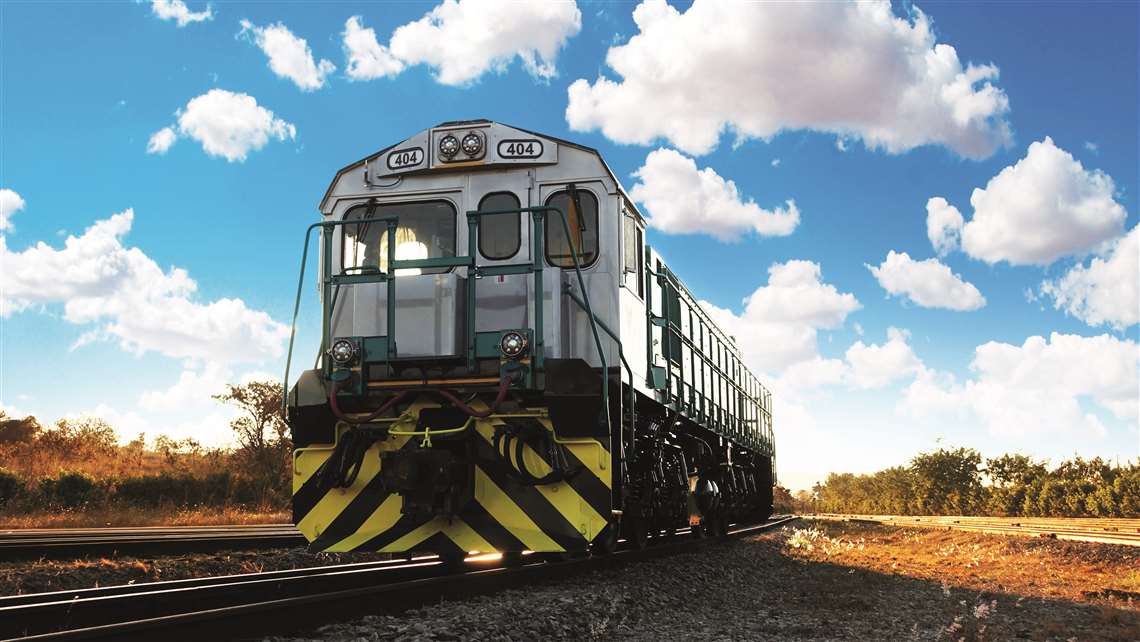 “We’ve been, as you know, engaged in electrification, and have had hybrid models for decades. So, they’re not new to us. We have had things like electric underground mining equipment. Just this week a customer in California announced that they purchased an all-electric switching locomotive from Progress Rail.” - Jim Umpleby, Caterpillar CEO
“We’ve been, as you know, engaged in electrification, and have had hybrid models for decades. So, they’re not new to us. We have had things like electric underground mining equipment. Just this week a customer in California announced that they purchased an all-electric switching locomotive from Progress Rail.” - Jim Umpleby, Caterpillar CEO
We have had things like electric underground mining equipment. Just this week a customer in California announced that they purchased an all-electric switching locomotive from Progress Rail (a Caterpillar company).
We don’t always speak publicly about everything we do, particularly in the R&D area, but rest assured that we continue to invest in this with the goal of meeting our customer’s needs.
In construction, we concur that it will likely happen first in smaller machines, or our Building Construction Products machines, in Europe especially. Again, our goal here is to be ready to meet the needs of our customers.
A DAY IN THE LIFE
Finally, what is a typical day like right now for the chairman and CEO of one of the world’s major manufacturers, working remotely?
Umpleby: Honestly, I spend most of my days doing what I’m doing with you right now, looking at a screen and having these kinds of conversations.
I had set a goal for myself to spend time with the top thousand leaders in the early weeks of the pandemic, just answering questions and talking about our strategy and talking about how we’re going to get through this.
It’s amazing. I meet virtually with people that I often wouldn’t have an opportunity to meet with, or we would only see each other once a year, maybe every two years, because they were literally all over the world. So, I could sit in front of my computer and do Q and A’s, and we can look at each other. I can start off in the morning talking to people in Europe and then North America in the afternoon, and in the evening talking to people in Asia. There are some productivity enhancements in all that, that I think will stick, that should stick, frankly.
One of the things that I’ve been pleased with is the willingness of our customers to spend time virtually as well. I mean, typically part of my job is to fly around the world, and here was one of our largest customers that wanted to do that virtually. But in this environment, it just seemed very natural because we’ve all gotten used to doing business in this way.
I think it’s a mixed bag. I think there’s an advantage in terms of productivity and being able to meet with people with all over the world in a very short period of time without travel.
I think it’s easier for existing relationships, if we have an existing relationship with a customer, a dealer, or an employee. If it’s a new relationship, and maybe I’m just old-fashioned, but I think for new customers and employees, it is important to come to an office to learn about our culture, to learn about our company, to learn about the way we deal with each other and to reinforce those values. I think face-to-face has advantages. Hopefully, we will be able to take the best of both worlds.
There are cost-saving opportunities. We’re a culture where we fly people around the world and get in a big room and have a conversation. Some of that will still exist, but I think we can replace a lot of those with virtual meetings, especially for internal meetings. I just think that face-to-face is still going to be quite important.
The days are pretty intense. I told one of my daughters it has been kind of like finals week in college but lasting for months.
This story first appeared in the January issue of Diesel Progress. For a free subscription, click here.
POWER SOURCING GUIDE
The trusted reference and buyer’s guide for 83 years
The original “desktop search engine,” guiding nearly 10,000 users in more than 90 countries it is the primary reference for specifications and details on all the components that go into engine systems.
Visit Now
STAY CONNECTED




Receive the information you need when you need it through our world-leading magazines, newsletters and daily briefings.
CONNECT WITH THE TEAM








